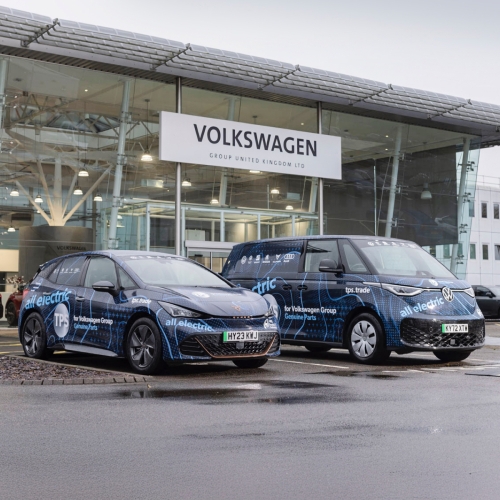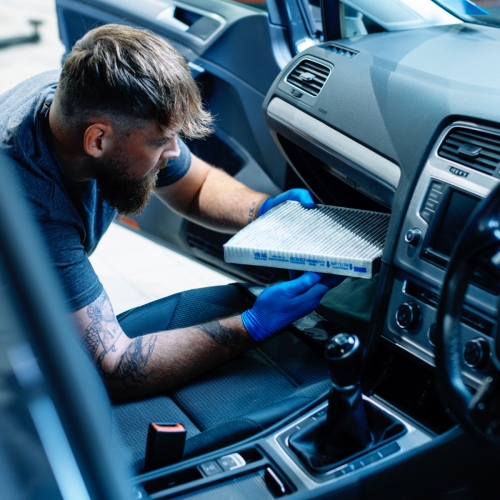
Adam Hockley, TPS Parts Product Manager, is our Tech Talk tutor providing expert insight on heating systems and coolants in modern vehicles. He discusses how each works, the issues to look out for and the importance of regular maintenance in ensuring that vehicle owners don’t get overheated by failing systems.
Coolant feature
“We are living in a time of change, with the automotive aftermarket going through one of the most transformational periods seen in recent times.
Driving this change, in particular, is the surge in the electric vehicle (EV) market. While the motor industry is not unfamiliar with change, we work amongst the most advanced technologies in any industry, the move to automotive electrification is accelerating rapidly.
One regular question asked by customers is why are we using coolant in an electric vehicle? Similarly, I often get asked ‘If my car has no engine, why does it need anti-freeze?’. They are good questions that require detailed responses.
So, why? A battery electric vehicle (BEV) does not have an engine that needs cooling in the traditional sense of an internal combustion engine (ICE). However, it does have a large battery or multiple batteries to power the motor.
In an electric vehicle the process of charging and discharging a battery creates heat. The faster you charge or discharge a battery the more heat is generated. A battery via its design can only really operate efficiently within a certain temperature range. Outside of this range it will simply fail to perform as designed.
Over time a battery running too hot internally will become damaged leading to different discharge rates in the cells and a gradual deterioration in performance. This can lead to a lower range in mileage when charged or a rapid decrease in range when driving or no drive at all.
Thermal Management has featured in every vehicle ever produced and both air cooling and liquid cooling have been around since engines were first produced. Air cooling can be found in the form of fins (passive cooling) on ECU’s or parts where the heat needs to be dissipated quickly.
Air cooling can be utilised in a BEV but the energy requirement to get to the desired speed where the air would cool the battery to its optimum range, along with the added weight, is not practical. As a result, the industry at present has adopted the
Liquid cooling offers batteries everything they need to operate efficiently, the ability to transfer heat away quickly, compact design and low weight. The system used in modern EVs is referred to as indirect cooling.
Here, coolant is circulated through pipes (assisted by a pump) and requires a high heat capacity additive, removing the heat in a very similar way to the current internal combustion engine (ICE) cooling system.
Research in this area is ongoing with many manufacturers looking at a direct cooling (Immersion Cooling) method. This is where the battery is submerged in a low conductivity coolant to maintain a constant optimum temperature, although it’s still in the R&D phase of development.
So, that is why we still use coolant in an EV!
HEATING FEATURE
As professionals it’s all too easy to assume that people understand how the heating system of their car works. It all makes perfect sense….right?
But if a problem occurs with a customer’s heating on a modern car, then it’s a real problem. This is especially the case in the winter with frosty morning starts and dark cold drives home, but equally so in the middle of the summer when the heating just won’t stop.
“The diagnosis can often lead to more questions. So, the problem is with my cooling system, not my heating?” Add in the air conditioning system and it can make for a confusing conversation.
In its most basic terms, the heating system is a secondary cooling system. In a liquid cooled vehicle, the heater fans blows air through a heater core/matrix and this core is part of the vehicles overall cooling circuit.
Instead of being just another mechanism to keep the engine at its optimum running temperature, it takes that heat from the vehicles coolant and uses it to warm the cabin and its occupants. The flow of coolant is regulated by a heater control valve which controls how much hot air enters the cabin.
However, in an internal combustion engine vehicle that hot air doesn’t blow hot as soon as you start the car (unless fitted with a pre-heater). The colder the outside temperature the longer you’ll wait to feel the warmth and that’s because of the thermostat.
A modern engine has an ideal operating temperature of between 90 -105 degrees Celsius. When it dips below that temperature the vehicle is not running efficiently as the thermostat remains closed, keeping the coolant inside the engine and preventing it from travelling through the entire circuit.
However, once the engine is hot enough the thermostat opens up and that hot coolant is allowed to the heater core, where you’ll start to feel it benefits.
In vehicles with automatic climate control, sensors monitor the interior temperature of the vehicle and open the thermostat once the coolant is allowed into the heating circuit. Doors and control flaps then open and close to maintain the selected temperature.
They direct the airflow to the relevant zone, where constant measurements are taken of the air temperature and adjustments are made to the flow of coolant. This allows a comfortable cabin atmosphere for each occupant to be maintained.
All coolant eventually breaks down and becomes less efficient, particularly if it’s not maintained to the manufacturers’ recommendations as this will allow corrosion to build up in the system.
This, as well as more common engine cooling issues, can clog the fine inner core of the heater matrix or cause internal corrosion and that means no heat, or worse, a leak into the vehicles footwell. It’s another reason to explain to a customer why maintaining their cooling system is more than just ‘anti-freeze’.
If the heater isn’t heating the cause could be a number of things. A failed blower motor, faulty thermostat or water pump, defective control motors. However, smart maintenance of the cooling system can go some way to preventing such heating issues.
In addition, ensuring an ICE vehicle gets up to operating temperature as quickly as possible, helps to limit wear and tear and reduces emissions.”



